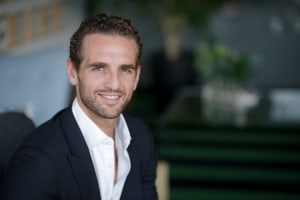
The communications landscape is changing, that’s no secret. The rate of change has never been so fast, but it will never be so slow again. It is also no secret that the traditional agencies are struggling to respond to the changes that their clients are demanding.
We have seen article after article published about the future of the agency model. And they all largely have one thing in common – they start with the traditional agency model and retrofit it to suit today’s changing landscape.
This is precisely the problem. The traditional agency model was built for another time. A time when creative and media were 80% of a client’s budget. A time when you could reach 80% of the population on three FTA channels.
The traditional agency model is not built for today. To build the agency of today, we need to start from scratch.
And if we’re starting from scratch, let's start with the most important part of the agency business – clients.
What does the modern-day client need from the modern-day agency?
First of all, they need access to the other most important part of the agency business –people. A client hires the expertise they either cannot afford or access in-house. The difficultly in today’s agency landscape, is that the best too often have had enough of the big agency environment and, given the low barriers to entry in the industry, have set up their own shop.
In this country we are blessed with incredible communications experts, however they are exceptionally hard to find in one place.
The modern-day agency needs to change this to provide their clients with access to a range of complementary expertise in one place.
This is because success in today’s fragmented consumer landscape relies on delivering truly integrated campaigns. Campaigns that come from a central truth, insight or creative and are delivered consistently, yet bespoke, across a range of channels and communications disciplines.
The modern consumer journey is not straightforward as the power is now in the hands of the customer as to when, where and how they get their information.
Today’s most successful campaigns start with a great idea (creative and research), that is delivered to consumers in line with their values (corporate comms), through the medium of their choice (advertising and digital), in their time (content), endorsed by a trusted source (PR and social), through the things they are passionate about (sponsorship), in the places they choose to be (experiential), in their community (community engagement) and in their language (multicultural marketing).
In today’s agency landscape, a client is typically faced with two options to deliver a truly integrated campaign:
Option 1: brief 5-10 small independent agencies run by true experts in each of the above communications disciplines and get them to work together
Option 2: brief a multinational holding company and receive a pitch deck that beautifully states how they will bring together the best talent, from a range of competing agencies to seamlessly service your account.
Lets just be frank, neither option works well.
Option 1 is time and cost intensive and while multinational holding companies still consist of agencies that are competitive, not complementary, Option 2 cannot work. When your biggest agency competitor is your next door neighbour, you build a very big wall to keep them out, no matter how attractive the client is.
The future of the agency model is the third way; a range of experts under one roof, who can effectively pass the baton along the line to have one consistent idea, executed perfectly across a range of communications disciplines/channels.
This is now starting to happen the world over in the big holding groups, competitive agencies are being smashed together to create complementary offerings within one group. Household agency names will continue to be killed off until the big groups consist of one or two separate creative, media, corporate comms, PR, digital, sponsorship and government relations agencies.
This might start to pay off in five year's time, however, the way to create the agency of the future is not to retrofit the agency of the past.
Finally, the best agency model is and always has been, owner-operated. You never get better service than when you deal with the person whose mortgage is on the line. It’s a fact of life, you experience it in every service business. Dealing with the owner is just different to dealing with a salaried employee, no matter how senior.
In today’s Agency landscape a client needs to have a very good international phone plan as the owners of Australia’s big agencies live in London, New York, Paris or Tokyo and most likely haven’t heard of you or your business.
The future of the agency model lies in having a range of complementary experts, under one roof, in an owner operated model.
The future of the agency model is a hybrid between the big holding groups who possess a broad range of services and the owner operated boutique agencies run by expert owner-operators.
The big agencies will get close to this eventually but will endure a lot more pain to get there. The time is now for the agencies built from scratch for today’s communications landscape, today’s staff and today’s client.


